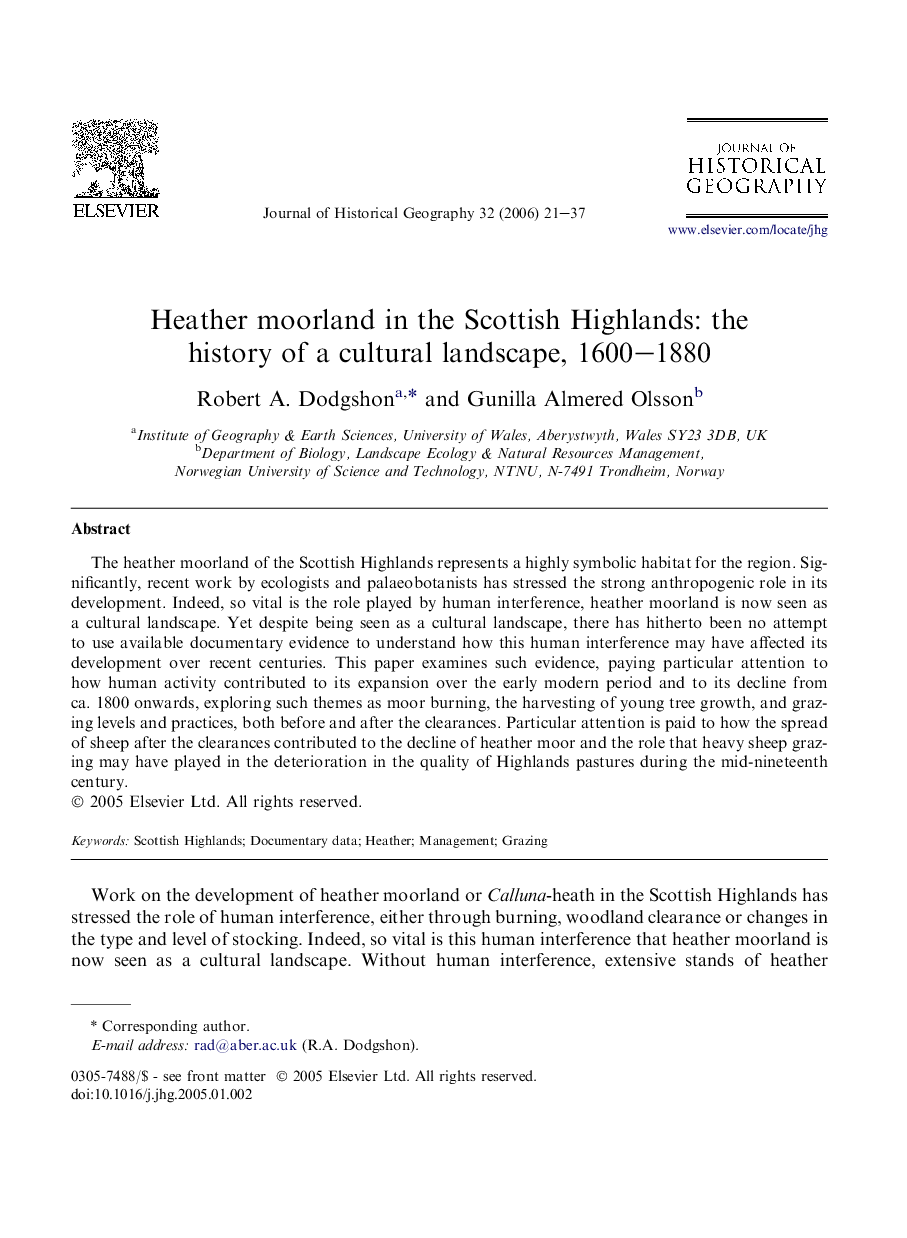| Article ID | Journal | Published Year | Pages | File Type |
|---|---|---|---|---|
| 1039852 | Journal of Historical Geography | 2006 | 17 Pages |
The heather moorland of the Scottish Highlands represents a highly symbolic habitat for the region. Significantly, recent work by ecologists and palaeobotanists has stressed the strong anthropogenic role in its development. Indeed, so vital is the role played by human interference, heather moorland is now seen as a cultural landscape. Yet despite being seen as a cultural landscape, there has hitherto been no attempt to use available documentary evidence to understand how this human interference may have affected its development over recent centuries. This paper examines such evidence, paying particular attention to how human activity contributed to its expansion over the early modern period and to its decline from ca. 1800 onwards, exploring such themes as moor burning, the harvesting of young tree growth, and grazing levels and practices, both before and after the clearances. Particular attention is paid to how the spread of sheep after the clearances contributed to the decline of heather moor and the role that heavy sheep grazing may have played in the deterioration in the quality of Highlands pastures during the mid-nineteenth century.
